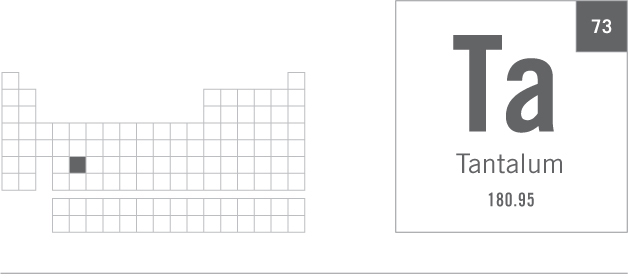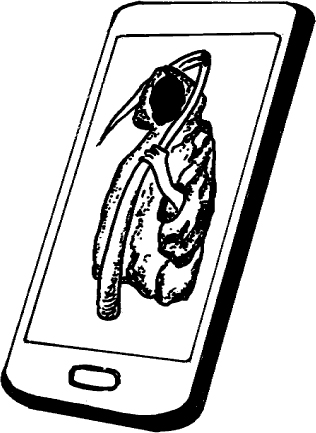When Ekeberg named tantalum, he’d Tantalus in mind,
’Tis soft ’n’ dense, and hard to melt, and quite inert you’ll find.
They’ve screwed its plates to cracked skull bone,

When Ekeberg named tantalum, he’d Tantalus in mind,
’Tis soft ’n’ dense, and hard to melt, and quite inert you’ll find.
They’ve screwed its plates to cracked skull bone,
GROUP 5 TRANSITION METAL
In 1802, the Swedish chemist Anders Gustaf Ekeberg (1767–1813) claimed the discovery of a new element. He named it tantalum (after Tantalus, a king in Greek mythology) because of its reluctance to dissolve in acids. Tantalus was condemned by the gods of Olympus for (among other things) daring to serve them the carved and roasted remains of his son, Pelops, whom he had earlier killed. Tantalus’s punishment was to eternally stand partially submerged in a pool of water that quickly receded each time he stooped to drink. With this in mind, Ekeberg wrote, “This metal I call tantalum . . . partly in allusion to its incapacity, when immersed in acid, to absorb any and be saturated.”
Tantalum is chemically very similar to niobium (which sits directly above it in group 5 of the periodic table). Both elements often occur together in nature and are then difficult to separate. For this reason, it took more than 40 years for the validity of Ekeberg’s claim to be finally acknowledged.
Tantalum is a soft, silvery metal that’s almost 50 percent denser than lead. It has the fourth-highest melting point of any metal (3,017°C), behind only tungsten (3,407°C), rhenium (3,180°C), and osmium (3,054°C). Tantalum is corrosion resistant and also impervious to chemical attack, even from aqua regia. (For more on aqua regia, see also “Rhodium, Rh” on page 132.)
Tantalum is biologically inert (it doesn’t provoke a response from biological tissue); thus, the human body tolerates it well. This characteristic enables the element to be used as a bone replacement in medical prosthetics, such as artificial limbs, and in plates used to repair skull fractures.
Practically every digital electronic device in use today relies on the high performance of tantalum capacitor chips. The chips’ small size helped transform the chunky, cumbersome mobile phones of the 1980s into the current lightweight, sleek, pocket-sized devices. Unfortunately, this innovation hasn’t been without significant cost—see the next line of the poem.
dee-arr-see
When the world embraced the mobile phone in earnest around the turn of this century, demand for tantalum increased considerably. Coltan (short for columbite-tantalite) is a mineral blend of niobium and tantalum compounds found in large deposits in, among other places, the Democratic Republic of Congo (DRC). Sadly, profits from coltan mining in the DRC have helped fund the warring factions in the country’s bloody civil war (which, according to some estimates, has claimed more than 5 million lives since 1998). Not surprisingly, Ekeberg’s discovery has been labeled as a conflict mineral (a mineral mined in a conflict zone and then sold to fund the war).
